2009 Pittcon Product Review: Addendum
The products and companies listed here were missed or presented incorrectly in our Pittcon Product Review in May.
Each year, the Pittcon Product Review presents many unique challenges. As the largest editorial project of the year, many hours go into ensuring that the review is as comprehensive as possible and that no stone is left unturned. Unfortunately, however, it does occasionally happen that a new product is missed, listed incorrectly, or otherwise presented erroneously. The products and companies listed here fall into one or more of these categories and it is our hope that this Addendum will present readers with a more complete picture of the spectroscopic products available at Pittcon 2009.
Hellma USA
Product Name: MCS FLEX Spectrometer Modules
Design Features: Suited for mobile measuring systems, the MCS FLEX line of spectrometer modules are comprised of an image grating, an optical input, and a receiver array (CCD or PDA). The overall configuration results in a spectral pixel resolution of 0.8 nm/pixel, enabling a spectral resolution of better than 3 nm, in accordance with the Rayleigh criterion. Depending on the detector used, the modules are offered as MCS FLEX CCD (190–980 nm) or MCS FLEX PDA (190–1015 nm).
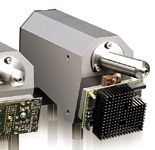
Product Name: TrayCell
Design Features: This fiber-optics accessory allows photometric measurements of ultra-micro volume samples. With its dimension of a standard cuvette, it works in most spectrophotometers, giving high reproducibility and accuracy. The different caps create a defined optical light path of 0.2 mm and 1 mm. This generates a virtual dilution factor of 1:50 and 1:10, respectively, compared to the measurement in a standard 10 mm cuvette. The required sample volume ranges from 0.7–5μL. On a photometer of average performance, the detection range is about 15 ng/μL–4500 ng/μL.
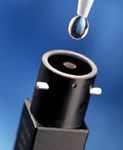
Product Name: Hellma Calibration Standards
Design Features: These liquid secondary standards are for convenient instrument calibration according to national and international standards. Hellma calibration standards are generally supplied with a certificate of calibration. Recalibration is available on request. All Hellma secondary standards are traceable to internationally accepted NIST primary standards.

HORIBA Jobin Yvon, Inc., A HORIBA Scientific Company
Product name: TemPro Fluorescence Lifetime System
Design features: Compact desktop instrument that uses time-correlated single photon counting (TCSPC), the most sensitive method for fluorescence measurements. Capable of measuring lifetimes ranging from picoseconds to seconds. Covers a broad spectral range by taking advantage of interchangeable pulsed laser diode and LED light sources covering discrete emission wavelengths from 255 nm to the near-IR. Rotational correlation times can be measured using optional poliarizers.
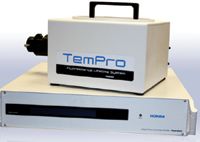
Product name: DynaMyc
Design features: Stand-alone, fully integrated confocal mapping FLIM system. Based on time-correlated single photon counting (TCSPC) technology and featuring new range of PicoBright high repetition rate laser diodes. Offers easy switching between excitation wavelengths and comprehensive software control, including light source, camera, pinholes, and filters. Allows easy access to fluorescence dynamics on the picoseconds to microseconds range for both novices and advanced users.
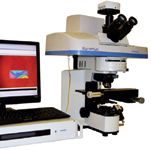
Product name: CLIP
Design features: CLIP (Collection of Line Intensity Profiles) simplifies analysis in ICP-AES. It assists the analyst in the development of methods for high-resolution sequential ICP-AES with no solutions to prepare or profiles to acquire. The profile of each line is calculated according to the instrument's configuration: focal length, slit combination, diffraction grating, and order used.
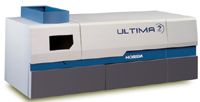
The following listing should have been included in the "ACCESSORIES" category:
SPEX CertiPrep
Product name: Calibration standards for ILM 0.5.2 and ILM 0.5.3
• Used for laboratory analysis.
Suggested applications: Analyzing samples with ILM 0.5.3 methods via ICP and ICP-MS.
Primary benefits: Premade reference standards specifically for ILM 0.5.2 and ILM 0.5.3.
Unique features: Manufactured under ISO 9001/A2LA ISO 17025 and Guide 34 Accredited.
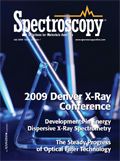
Multi-Analytical Study Reveals Complex History Behind Ancient Snake Motif in Argentine Rock Art
May 22nd 2025A recent study published in the Journal of Archaeological Science: Reports reveals that a multi-headed snake motif at Argentina's La Candelaria rock shelter was created through multiple painting events over time.
Fluorescence Spectroscopy Emerges as Rapid Screening Tool for Groundwater Contamination in Denmark
May 21st 2025A study published in Chemosphere by researchers at the Technical University of Denmark demonstrates that fluorescence spectroscopy can serve as a rapid, on-site screening tool for detecting pharmaceutical contaminants in groundwater.
New Deep Learning AI Tool Decodes Minerals with Raman Spectroscopy
May 21st 2025Researchers have developed a powerful deep learning model that automates the identification of minerals using Raman spectroscopy, offering faster, more accurate results even in complex geological samples. By integrating attention mechanisms and explainable AI tools, the system boosts trust and performance in field-based mineral analysis.

.png&w=3840&q=75)

.png&w=3840&q=75)



.png&w=3840&q=75)



.png&w=3840&q=75)















